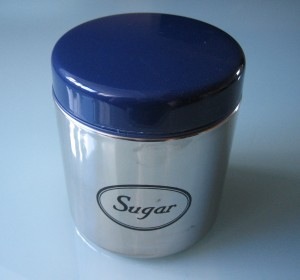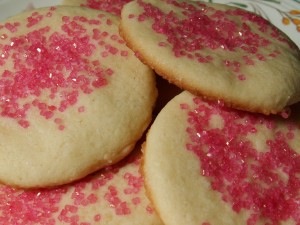The season of sugar plum fairies, ribbon candy, and sparkly cookies (and even fruit cake) is upon us. For about the past ten years we’ve been warned about watching how much sugar we’re eating and we still haven’t really listened.
According to the American Heart Association’s nutrition committee, Americans average 475 calories from added sugars every day. That’s a lot more than the recommended daily max of 100 calories (six teaspoons) from added sugars for women and 150 calories (nine teaspoons) for men. Think of it this way, that extra added 475 calories of sugar is the equivalent of 30 teaspoons a day.
A big problem with added sugars is that they both add calories and those “empty” calories displace the other nutritious foods.
Where Do Our Calories Come From?
Added sugars and solid fats account for about 35% of the calories in the average American’s diet. The recommended maximum is 5-15%.
About 36% of the added sugars come from sugary soft drinks — so cutting back on them is a good place to start trimming.
Natural vs. Added Sugars
Natural sugars are found in foods like milk and yogurt (lactose) and in fruit (fructose) as well as in many other foods. Because these sugars are found along with other healthy components in the foods, they’re considered okay.
Unfortunately, nutrition labels don’t differentiate between natural and added sugars. Look for any form of sugar in the food’s ingredient list.
Look for all forms (typical sugars end in –ose like lactose, glucose, fructose) including brown, raw, or invert sugar and/or “syrup” including corn, high fructose corn, and malt syrup. Also look for honey, molasses, agave nectar, evaporated cane juice, and fruit juice concentrate. Don’t be fooled by these. They sound healthy but are really just other forms of sugar.
.
Examples Of Foods With Added Sugar
A 16 ounce soda has about 11 teaspoons of added sugar. Although most of our extra added sugar comes from soda, sweetened beverages like fruit drinks, sports drinks, and teas; desserts; candy; and breakfast cereals all contribute.
Here are some examples of the added sugar in some common foods. This is just the added sugar, not the natural sugar that might also be in these foods.
- Cola, 8 oz. 22 grams
- Cranberry juice cocktail, 8 oz., 20 grams
- Chocolate Milk, reduced-fat, 8 oz., 14 grams
- Tea, instant, sugar-sweetened, 8 oz., 21 grams
- Applesauce, sweetened (1 cup), 16 grams
- Baked beans, canned (1 cup), 15 grams
- Oreo-type cookies (3), 12 grams
- Cranberries, dried (1/3 cup), 25 grams
- Fruit cocktail in syrup (1 cup), 26 grams
- Granola bar (1 oz), 12 grams
- Jellybeans, (1 oz, 10 large), 20 grams
- Popcorn, caramel-coated (1 oz), 15 grams
- Fruit yogurt (6 oz container), 19 grams




